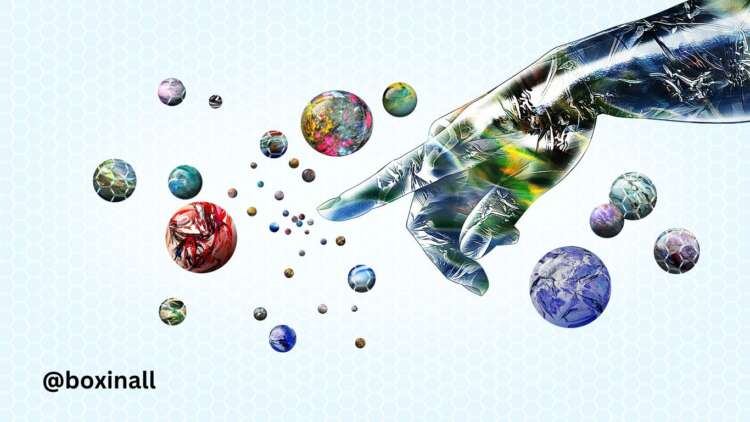Programming languages have always been the bedrock of software development. As the digital landscape continues to evolve, so do these languages, adapting to new technologies and user demands. In this article, we’ll explore the
top 10 programming languages
set to shape the future of programming.
A Review of Programming Languages
There’s a multitude of programming languages out there, each equipped with its own unique set of capabilities. While some are fundamental to web development, others are making their mark in systems programming. Some of the noteworthy ones include:
| Programming Languages | Key Features |
| HTML/CSS | Crucial for web development and is expected to maintain its importance |
| Swift | A dominant force in iOS development, appreciated for its speed, performance, and security |
| Go (Golang) | A product of Google, this language is recognized for its speed, simplicity, and suitability for systems programming |
The Top 10 Programming Languages of the Future
Predicting the most popular programming languages in the tech world is tricky. Yet, we can make educated guesses based on trends, online discussions, and data from platforms like Google Trends, Stack Overflow, GitHub, and the TIOBE index. Based on these indicators, we present the top 10 languages expected to define the future of programming:
- Javascript
- HTML/CSS
- Python
- SQL
- Typescript
- Swift
- Rust
- PHP
- C/C++
- Go (Golang)
Let’s delve into each one.
Javascript
Topping our list is Javascript, a favorite among web developers. This language, in combination with HTML, allows developers to create interactive website features. What makes Javascript a popular choice is its compatibility with all major web browsers.
Consider this: Javascript has been the most popular language among developers for eleven consecutive years, according to Stack Overflow’s Developer Survey. Sixty-four percent of respondents reported using Javascript in the past year. Given the demand for dynamic web applications, it’s clear that Javascript will continue to be pivotal in the future.
HTML/CSS
HTML and CSS, though two distinct languages, are often mentioned together due to their complementary roles in web development. HTML lays the groundwork for web pages, while CSS handles the layout and visual presentation. With the increasing demand for visually appealing, responsive, and accessible web content, these languages are set to maintain their relevance in the future.
Python
Python has replaced SQL as the third most commonly used language, according to the Stack Overflow Survey. Known for its simplicity and versatility, Python is a favorite among developers and data science experts. Its syntax is clean, intuitive, and almost English-like, making it an ideal choice for beginners.
SQL
SQL (Standard Query Language) has maintained its position among the top 10 programming languages of the future. Developed by IBM Research Center in 1974, SQL is a popular choice for managing databases. Unlike other languages on our list, SQL allows you to store, extract, and manipulate data within existing databases.
Typescript
Created by Microsoft in 2012, TypeScript has been gaining popularity among developers. Built on top of Javascript, it allows developers to use classes and other OOP concepts without losing backward compatibility. Many Google projects use TypeScript, contributing to its rapid growth.
Swift
Swift, an easy-to-learn language, is expected to dominate the iOS development market in the future. Swift’s features like speed, performance, and security make it one of the top 10 programming languages of the future.
Rust
Rust, known for its performance, safety, and concurrency, has been ranked as the most loved language by developers in the Stack Overflow surveys for eight consecutive years. Given its emphasis on safety, performance, and memory management, Rust is set to replace languages like C and C++ in certain fields.
PHP
Despite competition from Node.js and Python, PHP continues to be an industry leader. It’s used to write server-side scripts and is also used by developers to create command-line scripts and desktop applications.
C/C++
C and C++, while distinct, both share a common background and are praised for their efficiency, control, and versatility. They continue to be highly valued in the tech industry, especially in operating systems, embedded devices, and high-performance computing.
Go (Golang)
Developed by Google, Go is known for its speed, simplicity, and suitability for systems programming. With Go being compiled, it runs “close to the metal,” allowing for blazing-fast performance.
Top Paying Programming Languages
According to the Stack Overflow Survey, 2023, the languages that command the highest salaries include Zig, Erlang, F#, Ruby, Clojure, Elixir, Lisp, Scala, Perl, and Go.
Most Popular Programming Languages
As per the Stack Overflow Survey 2023, the most popular languages are Javascript, HTML/CSS, Python, SQL, Typescript, Bash/shell (all shells), Java, C#, C++, C, and PHP.
FAQ’S: Top 10 Programming Languages of the Future
Which is the best programming language in 2024?
The best programming language in 2024 will depend on the project requirements, but Python, Javascript, and Rust are popular choices.
Should I learn Java or Python?
The choice between Java and Python will depend on your career goals and project needs. Java is widely used in enterprise applications, while Python excels in AI and data science.
What factors determine the emergence of future programming languages?
The emergence of future programming languages is determined by technological advancements, industry demands, and community acceptance. Efficiency, ease of use, and support for emerging technologies like AI, blockchain, and quantum computing are also considered.
In conclusion, the future of programming languages is an exciting space to watch. As technologies continue to evolve, so will these languages, opening up new possibilities for developers worldwide.



